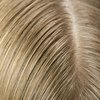Lichen sclerosus is an uncommon skin condition that primarily affects women after menopause, but it may also occur in men and children of either sex. It creates patchy, white skin that's thinner than normal. The condition may occur anywhere on the body but it's most common on the vulva, foreskin or around the anus. If you think you may have the condition, visit your doctor for a proper diagnosis, but if you have already been diagnosed, there are a few things you should know about your condition.
Directions
Seek Help. Once you have been diagnosed with lichen sclerosus, your doctor might refer you to a dermatologist, gynecologist, urologist or other specialist who will be able to offer personalized advice on your condition. Follow their advice, but if you don’t have faith, seek a second opinion.
Wait. If your doctor has said you might grow out of lichen sclerosus, you might be able to treat it with topical medication, but apart from that, you will just have to wait.
Treat the symptoms. Your doctor may prescribe a steroid ointment or other cream. Use the cream as your doctor recommends, and don’t be tempted to use it more often. Overuse can result in skin thinning, which will make your condition worse, according to the University of Iowa Hospitals and Clinics.
Make some lifestyle changes. Avoid tight-fitting clothing that aggravates the affected area, and don’t use tampons if lichen sclerosus affects your vulva, vagina or anus.
Have regular check-ups. Get your doctor or specialist to inspect your lichen sclerosus every six to 12 months, according to the Mayo Clinic, to check for skin changes or medication side effects.
Consider surgery. For men, removing the foreskin usually clears lichen sclerosus, but surgery does not usually work for women. If you are a man, speak to your doctor or specialist about this option.
References
Writer Bio
Laura Parr began her professional writing career in 2008 contributing to websites such as Travelbox, 1stop and Traveldojo. She now writes health and fitness-related articles. Parr earned a diploma of adult nursing from the University of Brighton, followed by a postgraduate certificate in public health from the University of Manchester.
Image Credit
Jupiterimages/Polka Dot/Getty Images




